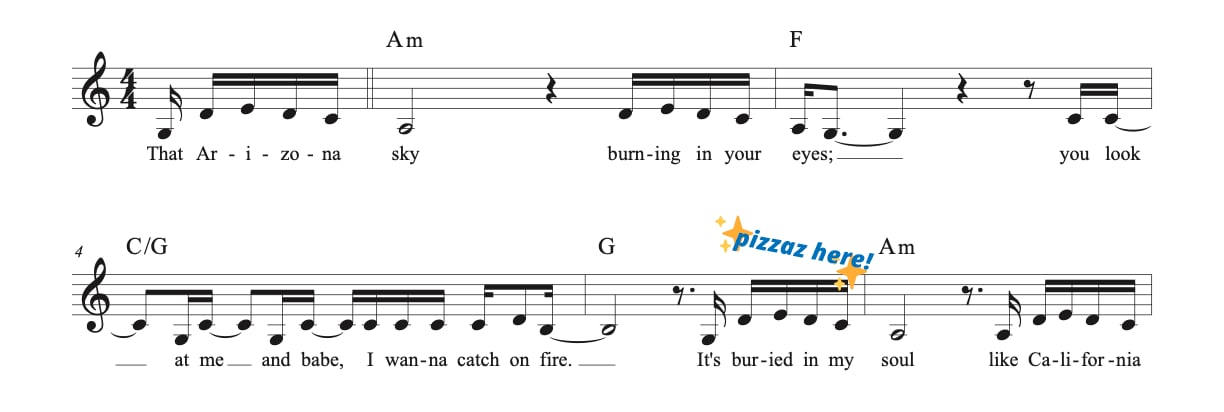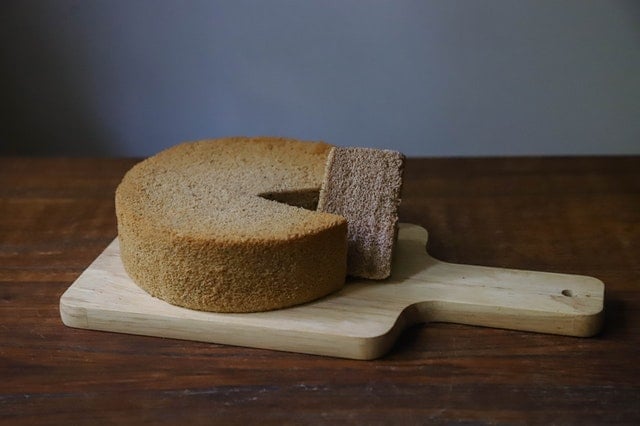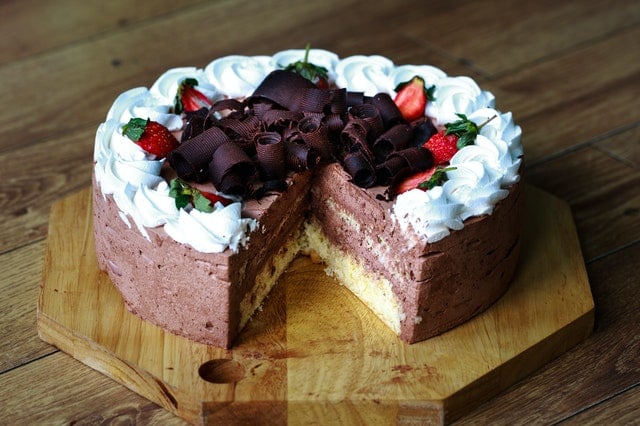Riffs and fills are what take your piano-playing to the next level.
Let’s face it: chording is great — everything sounds nice and right — but adding an extra riff or fill makes a big difference. It fleshes out the song and is the difference between good piano players and great piano players.
In this lesson, I’ll show you how to integrate a simple fill between your chords that will add colour to your playing. I’ll also break down, in detail, exactly how this fill works.
I’ll be using “Always Remember Us This Way” by Lady Gaga, but this fill can work in lots of pop songs.
<< Download the FREE lead sheet for “Always Remember Us This Way” Here! >>
Subscribe to The Note for exclusive interviews, fascinating articles, and inspiring lessons delivered straight to your inbox. Unsubscribe at any time.
This is the chord progression we’ll use in “Always Remember Us This Way”:
Am – F – C/G – G
And here are the notes to each chord in root position:
I’ll be using inversions here and there in this tutorial, but if you don’t know how to use inversions yet, don’t worry. These fills still work with root position chords.
🔥🎹 HOT TIP! C/G is a slash chord. We play a regular C major chord in the video, but if you want to play the original slash chord, all you have to do is play a C major triad on your right hand and G as your bass note on your left. Learn more about slash chords here.
For this lesson, we’ll play a simple fill that uses the first three notes of our chord shape. So, in A minor, it’ll look something like this:
This works with any of the root position chords in this song. Just roll through those notes!
Try to “roll into” the downbeat. Practice this a few times. Then, when you’re ready, fluff out the fill by making it a turnaround like this example in A minor:
You’re essentially playing an Amin sus2 chord between regular Amin chords.
Now that we know how to play the fill, when do we play it to make our song sound awesome?
I like to play fills like these at the end of the measure. I think it sounds too busy to add in the beginning of a measure, but when we get to the end, the fill gently transitions us to the next chord.
We understand many of you love diving deep into the theory, so here’s the explanation behind the timing of this fill.
“Always Remember Us This Way” is in 4/4 (“common”) time. In 4/4 time, there are four beats per measure. So, we can count the rhythm of this song like this:

(The vertical black lines represent bar lines.)
We can further sub-divide our counting (1-2-3-4, 1-2-3-4 etc.) like this:

This is the equivalent of breaking down each quarter note of a 4/4 measure into four sixteenth notes.
If you listen to the song a few times, you’ll find that each group of four measures naturally sound like one phrase.

Inserting a fill between phrases makes each phrase sound more complete. So, if we add four notes of a fill into the last beat of the last measure, what we’re essentially doing is adding four sixteenth notes:

In terms of the lead sheet, this is where we add the fill:

By the way, if this detailed, math-y rhythm breakdown makes things more confusing to you, but you intuitively understand the rhythm behind the riff, don’t worry too much about it. We each learn in unique ways — some people may find a thorough breakdown useful, while others prefer to intuitively feel things out. And that’s okay!
One more thing I want to leave you with…
All notes within the scale of the key are fair game!
What does this mean? Well, we’re in the key of A minor. The notes in the A minor scale are A-B-C-D-E-F-G (no sharps or flats). This means all the white keys will sound good as riffs and fills for this song in A minor!
So, I encourage you to slowly branch out across these notes and experiment. Sometimes you’ll make bad sounds (it just happens), but with practice, you’ll build confidence and learn to trust that you’ll make good sounds 🙂
Now that I’ve showed you where it makes sense to put a fill, add it elsewhere! You can see an example of this in the video where I add even more embellishments outside the end of the phrase. Experiment with what sounds good to you.
Think of it this way: 4/4 quarter-note chords are the cake; anything else is the icing!




Now, remember to have a tasty icing-to-cake ratio! Use riffs and fills sparingly — just like having way too much icing on your cake can be overwhelming, there can be too much of a good thing 🙂
Lisa Witt has been teaching piano for more than 20 years and in that time has helped hundreds of students learn to play the songs they love. Lisa received classical piano training through the Royal Conservatory of Music, but she has since embraced popular music and playing by ear in order to accompany herself and others. Learn more about Lisa.
/marketing/pianote/promos/april/banner-bg-m.webp)
We use cookies for traffic data and advertising. Cookie Policy »
/marketing/pianote/promos/april/banner-title.webp)